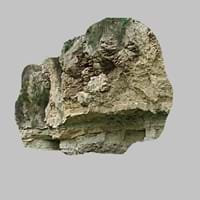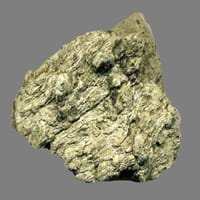Definition
A water-soluble mineral sediment resulting from concentration and crystallization by evaporation from an aqueous solution
Dacite is a volcanic igneous rock which is rintermediate in composition between andesite and rhyolite
Origin
USA
Romania and Moldova, Europe
Discoverer
Usiglio
Unknown
Etymology
From a sediment left after the evaporation
From Dacia, a province of the Roman Empire which lay between the Danube River and Carpathian Mountains where the rock was first described
Class
Sedimentary Rocks
Igneous Rocks
Sub-Class
Durable Rock, Soft Rock
Durable Rock, Soft Rock
Group
Not Applicable
Volcanic
Other Categories
Coarse Grained Rock, Fine Grained Rock, Medium Grained Rock, Opaque Rock
Fine Grained Rock, Medium Grained Rock, Opaque Rock
Texture
Earthy
Aphanitic to Porphyritic
Color
Colourless, Green, Grey, Silver, White
Bluish - Grey, Brown, Grey, Light to Dark Grey
Durability
Durable
Durable
Appearance
Glassy, Vesicular and Foilated
Vesicular
Interior Uses
Decorative Aggregates, Entryways, Flooring, Homes, Interior Decoration
Decorative Aggregates, Entryways, Interior Decoration
Exterior Uses
As Building Stone, As Facing Stone, Garden Decoration, Paving Stone
As Building Stone, Paving Stone, Garden Decoration
Other Architectural Uses
Curbing
Curbing
Construction Industry
As a Flux in the Production of Steel and Pig Iron, As a Sintering Agent in Steel Industry to process Iron Ore, As Dimension Stone, Cement Manufacture, for Road Aggregate, Making natural cement, Manufacture of Magnesium and Dolomite Refractories
As Dimension Stone, Construction Aggregate, for Road Aggregate, Landscaping
Medical Industry
Taken as a Supplement for Calcium or Magnesium
Not Yet Used
Antiquity Uses
Artifacts
Artifacts
Commercial Uses
Used in the manufacture of Ceramic Powder, Used in the preparation of Sulfuric Acid and Silicon Diborite
Commemorative Tablets, Creating Artwork
Types
Not Available
Footwall Dacite, Hanging wall Dacite, Tuff and Biotite Dacite
Features
Generally rough to touch, Splintery, Veined
Host Rock for Lead, Is one of the oldest rock
Archaeological Significance
Monuments
Not Yet Used
Not Yet Used
Famous Monuments
Not Applicable
Not Applicable
Sculpture
Not Yet Used
Not Yet Used
Famous Sculptures
Not Applicable
Not Applicable
Figurines
Not Yet Used
Not Yet Used
Formation
Evaporite is water-soluble mineral sediment which forms from concentration and crystallization by evaporation from an aqueous solution.
Dacitic magma is formed by the subduction of young oceanic crust under a thick felsic continental plate. Further, the Oceanic crust is hydrothermally altered as quartz and sodium are added.
Mineral Content
Calcite, Cancrinite, Gypsum, Kyanite, Magnetite
Amphibole, Apatite, Biotite, Feldspar, Garnet, Hornblade, Magnetite, Plagioclase, Pyroxene, Quartz, Zircon
Compound Content
CaMg(CO3)2, CaO, Calcium Sulfate, KCl, MgO, NaCl
Ca, Fe, Potassium Oxide, Mg, Potassium, Silicon Dioxide
Types of Metamorphism
Burial Metamorphism, Cataclastic Metamorphism, Contact Metamorphism, Impact Metamorphism, Regional Metamorphism
Burial Metamorphism, Cataclastic Metamorphism
Types of Weathering
Not Applicable
Biological Weathering, Chemical Weathering, Mechanical Weathering
Types of Erosion
Not Applicable
Chemical Erosion
Grain Size
Medium to Fine Coarse Grained
Medium to Fine Coarse Grained
Fracture
Conchoidal
Conchoidal
Porosity
Less Porous
Less Porous
Luster
Subvitreous to Dull
Subvitreous to Dull
Compressive Strength
Not Available
Toughness
Not Available
Not Available
Specific Gravity
2.86-2.99
2.86-2.87
Transparency
Translucent
Translucent
Density
2.8-2.9 g/cm3
2.77-2.771 g/cm3
Resistance
Heat Resistant, Pressure Resistant
Heat Resistant, Impact Resistant, Pressure Resistant, Wear Resistant
Deposits in Eastern Continents
Asia
Not Available
Not Yet Found
Africa
Not Available
Not Yet Found
Europe
United Kingdom
France, Greece, Romania, Scotland, Spain
Others
Not Yet Found
Not Yet Found
Deposits in Western Continents
South America
Colombia, Paraguay
Argentina, Bolivia, Chile, Colombia, Ecuador, Peru, Venezuela
Deposits in Oceania Continent
Australia
Central Australia, Western Australia
New Zealand, South Australia, Western Australia
Evaporite vs Dacite Characteristics
Though some rocks look identical, they have certain characteristics which distinguish them from others. Characteristics of rocks include texture, appearance, color, fracture, streak, hardness etc. Evaporite vs Dacite characteristics assist us to distinguish and recognize rocks. Also you can check about Properties of Evaporite and Properties of Dacite. Learn more about Evaporite vs Dacite in the next section. The interior uses of Evaporite include Decorative aggregates, Entryways, Flooring, Homes and Interior decoration whereas the interior uses of Dacite include Decorative aggregates, Entryways and Interior decoration. Due to some exceptional properties of Evaporite and Dacite, they have various applications in construction industry. The uses of Evaporite in construction industry include As a flux in the production of steel and pig iron, As a sintering agent in steel industry to process iron ore, As dimension stone, Cement manufacture, For road aggregate, Making natural cement, Manufacture of magnesium and dolomite refractories and that of Dacite include As dimension stone, Construction aggregate, For road aggregate, Landscaping.
More about Evaporite and Dacite
Here you can know more about Evaporite and Dacite. The life cycle of a rock consists of formation of rock, composition of rock and transformation of rock. The composition of Evaporite and Dacite consists of mineral content and compound content. The mineral content of Evaporite includes Calcite, Cancrinite, Gypsum, Kyanite, Magnetite and mineral content of Dacite includes Amphibole, Apatite, Biotite, Feldspar, Garnet, Hornblade, Magnetite, Plagioclase, Pyroxene, Quartz, Zircon. You can also check out the list of all Sedimentary Rocks. When we have to compare Evaporite vs Dacite, the texture, color and appearance plays an important role in determining the type of rock. Evaporite is available in colourless, green, grey, silver, white colors whereas, Dacite is available in bluish - grey, brown, grey, light to dark grey colors. Appearance of Evaporite is Glassy, Vesicular and Foilated and that of Dacite is Vesicular. Properties of rock is another aspect for Evaporite vs Dacite. The hardness of Evaporite is 2-3 and that of Dacite is 2-2.25. The types of Evaporite are Not Available whereas types of Dacite are Footwall Dacite, Hanging wall Dacite, Tuff and Biotite Dacite. Streak of rock is the color of powder produced when it is dragged across an unweathered surface. The streak of Evaporite and Dacite is white. The specific heat capacity of Evaporite is 0.92 kJ/Kg K and that of Dacite is 0.92 kJ/Kg K. Depending on the properties like hardness, toughness, specific heat capacity, porosity etc., rocks are resistant to heat, wear, impact, etc.Evaporite is heat resistant, pressure resistant whereas Dacite is heat resistant, impact resistant, pressure resistant, wear resistant.





